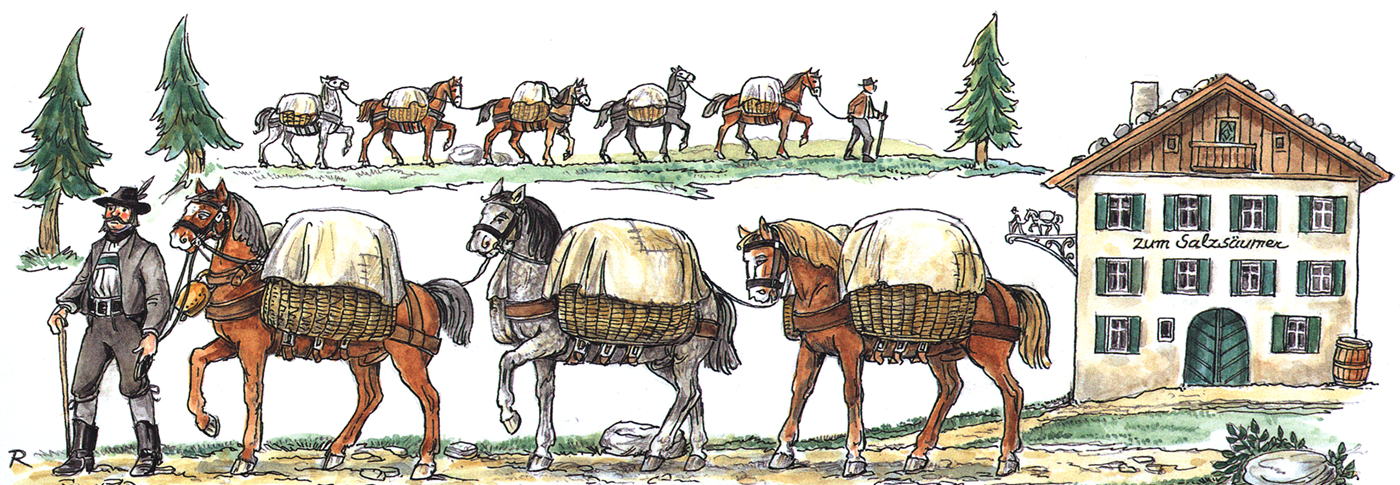“Ramsau – Jewel of the Alps“ – Few of the many small towns in the Alps have truly earned this designation as Ramsau, located in Berchtesgadener Land, has. Surrounded by the Berchtesgaden Alps with the Watzmann massif, Hochkalter and Reiter mountain pasture situated to the south as well as the gentle Latten and Toten Mannes ranges to the north, the national park community has managed to preserve the better part of their century old culture and traditions. In addition, the residents have succeeded in weathering municipal and regional reforms thus maintaining their autonomy. The town, situated to the west of Berchtesgaden and renown for its natural treasures such as Gnotschaften Au (meadow), Antenbichl, Schwarzeck and Lake Tauben, was first documented in the year 1295 as “Ramsaw“. It may be assumed that trade between Berchtesgaden and Pinzgau was already taking place via the Hirschbichl Pass at this time.
A tavern was constructed around the year 1500 as a place of lodging for the wagoners travelling through the town and in 1512, Prince-‐Provost Gregor Rainer had a parish church built. This church is a Ramsau landmark and internationally renown for its beauty and unique exposure. As Archbishop Wolf Dietrich blocked access from Bad Reichenhall to Berchtesgaden in 1611, the Duke of Bavaria had a new route constructed from Ramsau to Berchtesgaden via the Schwarzbach mountain saddle.
The touristic development of Ramsau took place in multiple phases due to aristocratic and civil expeditions. Members of the ruling houses that came to indulge in their passion for hunting in the territories owned by the house of the Prince-‐Provost, were among its first lodgers. As Berchtesgaden lost its independence in 1803 and the town of Ramsau along with it, it was then integrated into the Salzburg electorate. The road from Berchtesgaden to Ramsau-‐Hintersee extending to Pinzgau was expanded in 1805 in order to make it traversable by four in hand cargo wagons. In 1810, another change of government was in store at which time Berchtesgaden, Ramsau and Salzburg were united with the Bavarian Kingdom and in 1812 the town, a curacy at this time, was established as a parish.
A further milestone in the development of Ramsau occured in 1816 with the extension of the roadway from Ramsau to Bad Reichenhall via the Schwarzbachwacht. By the same token, the erection of the salt line from Berchtesgaden to Ramsau via Bad Reichenhall had also begun. The structure was in operation for over 100 years and the Ramsauer Soleleitungsweg (one of the most attractive sections of the “SalzAlpensteig“) is heralded as one of the most beautiful and panoramic hiking trails in the Berchtesgaden region.

